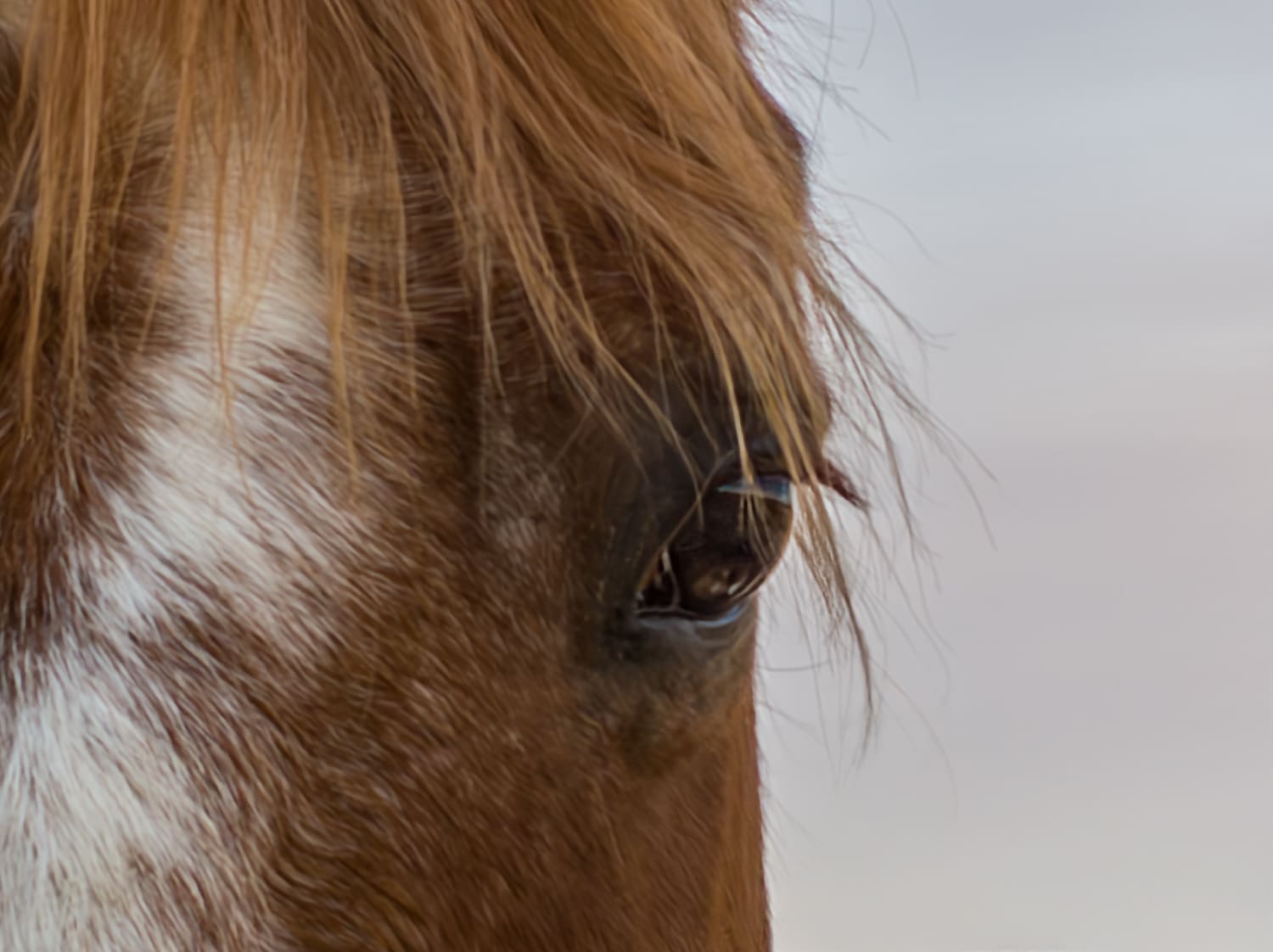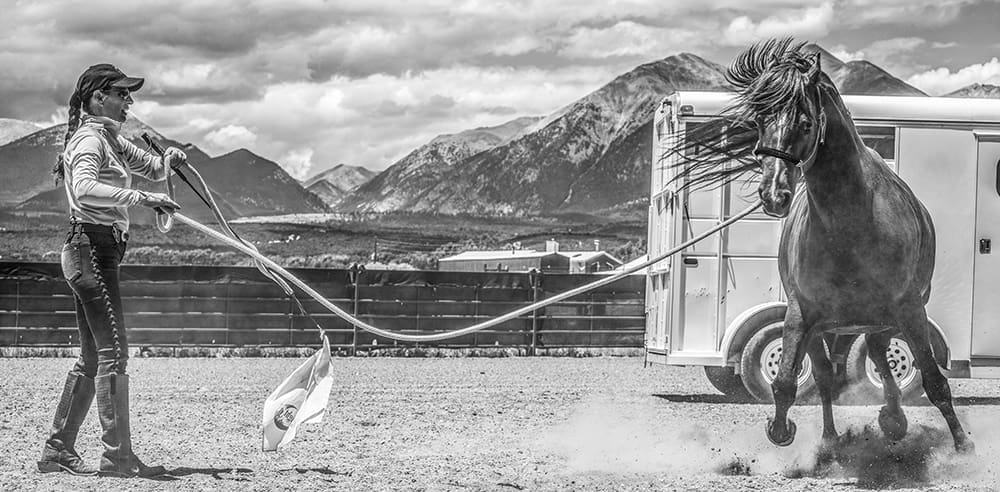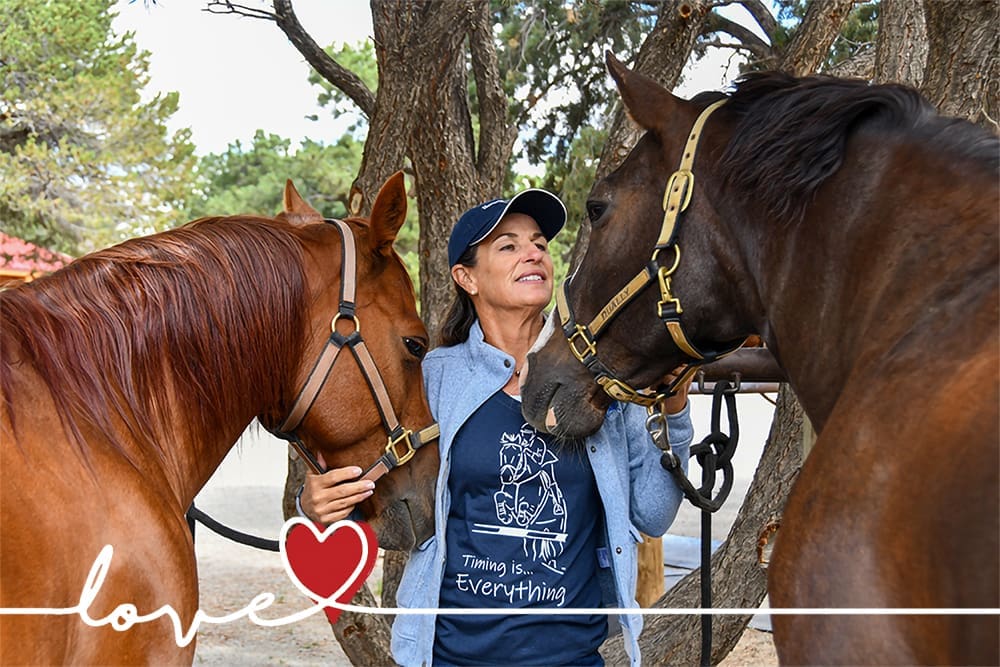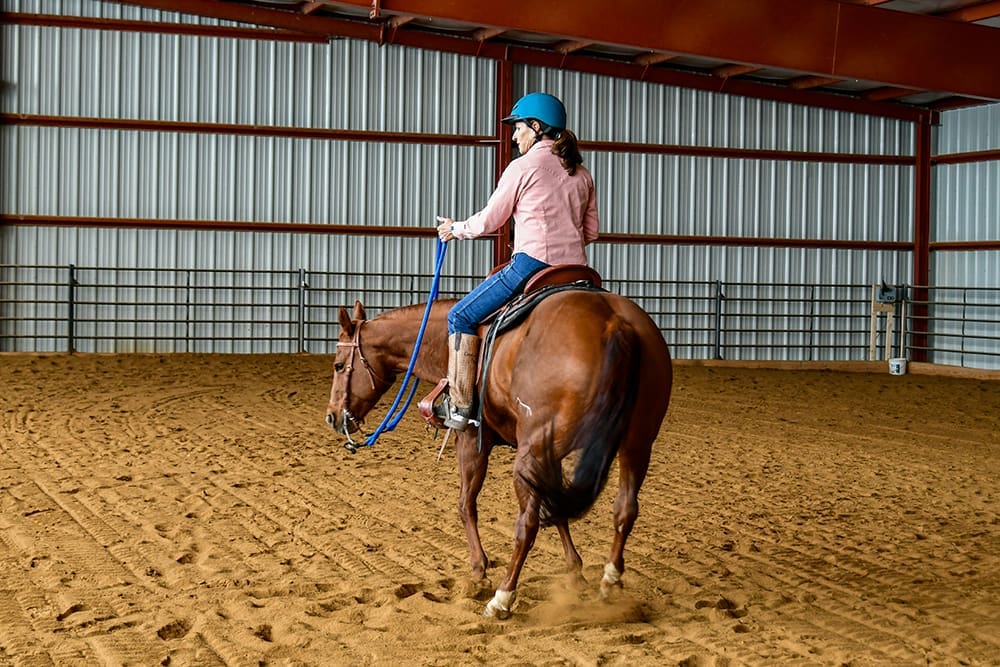To me, this is not a simple yes-or-no, black-or-white answer. Just as there are many good reasons not to shoe your horse, there are many reasons why you might want to shoe. There are few things with horses that are absolute—always this way or never that way.
I am generally suspicious when someone takes an unmovable stance on an issue. I worry that such an outlook may indicate a closed mind and an unwillingness to consider other points of view. I love to keep learning and to do that, you have to have an open mind to listen, consider and relate what you hear to what you already know. Having a firm stance can be a very slippery slope when it comes to horses. If you ever think you have all the answers, a horse will come along and prove you wrong. Usually, they’ll prove you wrong in some kind of humiliating way.
The Barefoot Reasoning: There are many compelling arguments not to put steel shoes on a horse’s feet. The hoof naturally expands when the horse’s weight comes down on it, increasing circulation in the hoof, pumping blood up the leg and acting as a shock absorber. The rigidity of a metal horseshoe inhibits this natural expansion and may decrease the circulation of blood in the foot and limb.
Also, horses that are shod are more prone to injuring to themselves and others when the hard shoe comes into contact with soft flesh. Unshod horses have better traction in many slick conditions and the hoof tends to be healthier. Putting holes in the hoof wall is not without risk and should never be taken lightly or done for no reason. Leaving horses shod indefinitely can lead to weakened and misshapen hoofs and even lameness.
There are many excellent arguments for leaving a horse barefoot, not the least of which is the monetary cost of having a horse shod!
Yes to Shoes: There are also many good arguments for putting shoes on your horse, if shoes are needed. Therapeutic shoeing is perhaps one of the most compelling reasons. There are many conditions that a farrier can treat with shoes that can make the horse more comfortable and prolong his useful working life. Navicular disease, severe laminitis, thin-walled hooves, foot-related lameness, under-run heels, arthritis, bruising, stabilizing cracks, injuries and conformation flaws, just to name a few.
Depending on the workload of an individual horse and the terrain and/or surface he is ridden on, he may or may not need shoes. Often horses that are ridden hard every day in abrasive or rocky conditions will simply wear their feet down faster than they grow. Hoof boots can help, but they aren’t an answer to every shoeing need. Shoeing can prevent foot soreness and stone bruising, enhance performance (such as sliders on a reining horse) and help improve traction when specialized shoes are used (like borium or cogs).
Hoof Boot It: Using hoof boots can be a great mitigating factor to keep your horse barefoot but still ride him hard in rugged terrain or to give the hoof time to toughen-up. Hoof boots might allow you to keep your horse barefoot, or make him more comfortable when his feet get sore, and generally they provide good traction on rocky or slick terrain. But there are some disadvantages too. Hoof boots can be difficult to fit, hard to put on, yet somehow they manage to come off at the worst possible moment. Some hoof boots will allow mud and debris to sneak inside, which can cause irritation and discomfort to the horse, just like gravel inside your shoe would. If you choose to use boots, read the reviews and choose a pair that doesn’t collect dirt.
For performance horses, hoof boots are generally too bulky and clunky for the horse to make difficult athletic maneuvers. It’s like expecting a ballet dancer to perform in hiking boots. It’s not that there is anything wrong or bad about hiking boots, in and of themselves, but they are not the footwear of choice for all activities. Again, there is rarely one right answer when it comes to horses.
All Things Considered: For me, making the decision to shoe a horse or leave him barefoot is never taken lightly and always in consideration of the individual horse, his workload and his unique needs. Individual factors include foot health and strength, the terrain he will be ridden in, how often and how hard he is ridden, the type of work he is doing (trail or arena, performance or pleasure) and what is at stake if he gets foot sore or a stone bruise and has to be laid-off to recover.
In my barn, we have horses that are barefoot, horses that are shod with front shoes only (the front feet carry more weight), horses that are shod with hind shoes only (sliders for our competition horses), and horses that are shod all the way around. All of our horses go at least half the year without shoes (some for the entire year), to help improve hoof health and to give them better traction in the ice and snow.
Horses can be conditioned to go barefoot all the time, but it takes about a year to grow a new hoof and to toughen up the feet enough to endure hard work every day on hard ground. Sometimes it’s hard to sacrifice the time off or a lesser workload that toughening of the feet requires. Although there is nothing natural about putting shoes on horses, there is also nothing natural about putting a heavy rider and gear on their back and forcing them to go into terrain where they would not voluntarily go.
There are many parts of the country where the ground surface is very conducive to horses being barefoot and there are some places where it is not—like where I live. I always say, there is a reason why they call it the Rocky Mountains. But still, even living here in the Rockies, I have some horses that can stay barefoot with heavy workloads, and some that get foot sore easily, even riding in the arena. There are some areas that we trail ride that are so rocky that even shod horses can get foot sore on long, multi-day rides, and terrain where getting off to retrieve a hoof boot that has fallen off would be downright dangerous.
To me, the bottom line is that I would never choose to shoe a horse if it weren’t important–considering all of the factors and options. I never take putting holes in the hoof wall or the rigidity of steel shoes lightly. I do, however, consider all the factors, the pros and cons of both shoeing and barefoot, each individual horse’s situation, and his overall health and well-being before deciding to shoe or not to shoe.
As usual, when it comes to horses, there is no one right answer, and whenever I hear someone saying ‘never’ or ‘always,’ it gives me pause for thought. To me, keeping an open mind and considering other points of view allows me to learn more and grow.
Enjoy the ride,
Julie Goodnight



